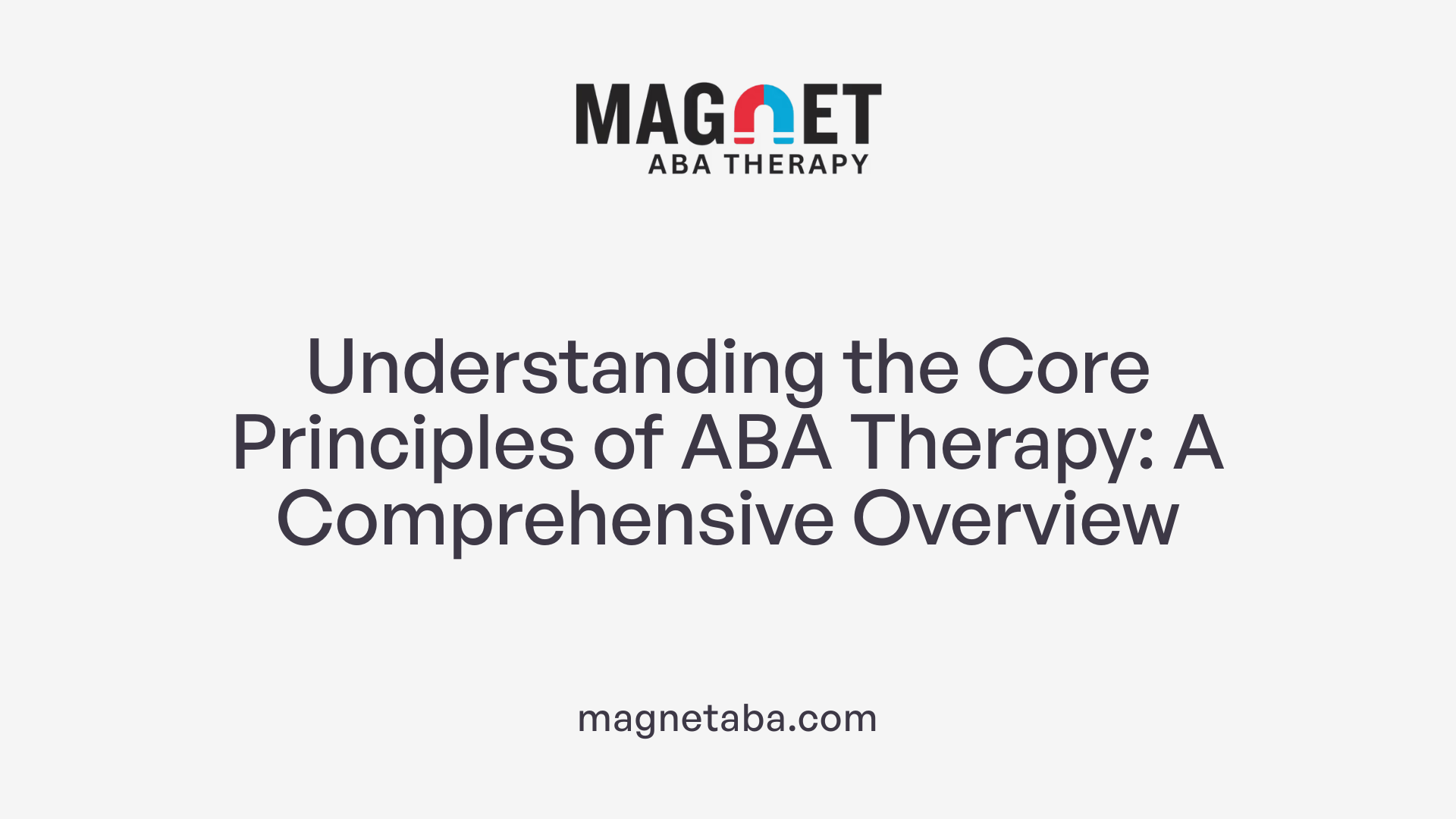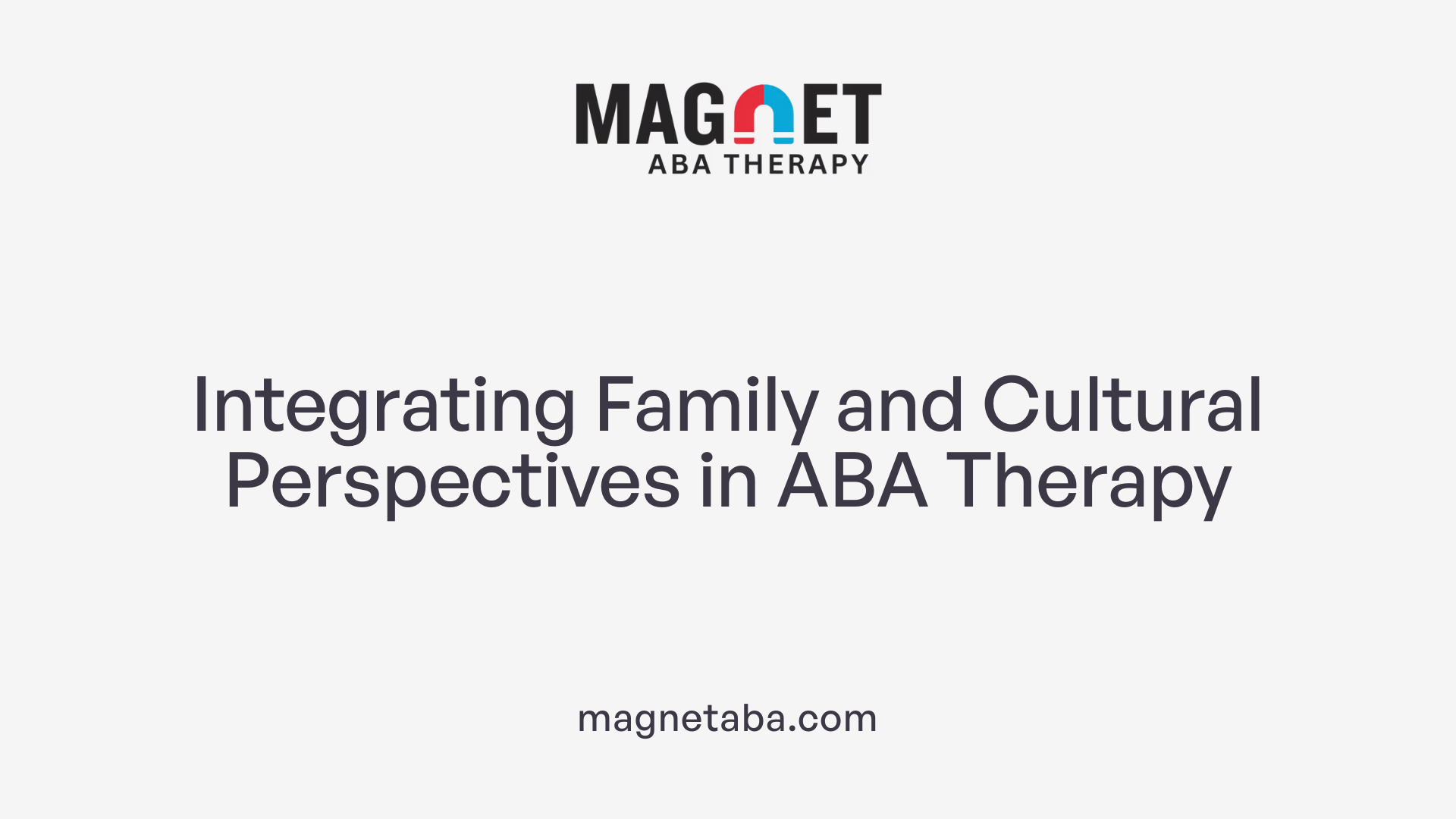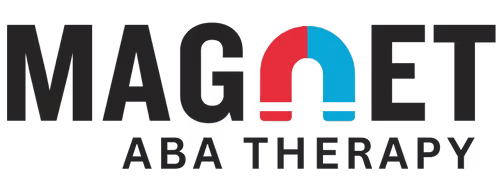Understanding the Basics of ABA Therapy
Applied Behavior Analysis (ABA) is recognized as one of the most effective interventions for children with Autism Spectrum Disorder (ASD), thanks to its structured, empirical approach tailored to individual needs. By utilizing principles of learning and behavior modification, ABA helps children develop key skills in communication, social interaction, and daily living.
The Fundamentals of ABA Therapy

What is ABA therapy?
Applied Behavior Analysis (ABA) is a scientific approach grounded in the principles of learning theory, leveraging systematic strategies to understand and modify behavior. Its primary aim is to help individuals—especially children with autism spectrum disorder (ASD)—acquire new skills while enhancing socially significant behaviors and reducing challenging ones. ABA therapy focuses on several key areas:
- Communication Skills: Enhancing expressive and receptive language abilities to help children articulate their needs and emotions more effectively.
- Social Skills: Teaching strategies for navigating social interactions, enabling the formation of meaningful relationships.
- Daily Living Skills: Promoting independence by improving self-care abilities and task completion necessary for everyday living.
Central to ABA is a systematic collection of data that assesses the effectiveness of various interventions. This data-driven approach helps inform future strategies, making ABA a flexible method that can be adapted to individual needs.
Principles and areas of focus
ABA therapy employs several core principles designed to create impactful change. Using techniques such as positive reinforcement, it encourages desirable behaviors by following them with meaningful rewards tailored to the individual. Furthermore, specific frameworks, such as the 'A-B-Cs' (Antecedent, Behavior, Consequence), guide practitioners in understanding and addressing behaviors effectively.
The therapy is structured around a comprehensive assessment process that includes direct observation and caregiver interviews. These methods help in identifying each child's unique strengths, challenges, and preferences.
To ensure successful outcomes, ABA programs are personalized, setting achievable goals relevant to the individual's needs. Continuous monitoring and adjustments made during therapy sessions are crucial to maintaining effectiveness. Family involvement is also emphasized, as it boosts the sustainability of learned behaviors in various settings, crucial for real-world application.
With its focus on measurable and observable behavior, ABA therapy remains a versatile and evidence-based method utilized in diverse settings, showing promising improvements in the lives of children with autism.
The Uniqueness of ABA Therapy

What makes ABA therapy unique compared to other interventions?
ABA therapy, or Applied Behavior Analysis, stands out due to its strong empirical foundation and an individualized approach tailored to each child's specific needs. Unlike many other treatment modalities, ABA is deeply rooted in behavioral science, with pioneers like John B. Watson and B.F. Skinner influencing its core principles. This historical context contributes to its structured methodology, focusing on evidence-based practices.
A crucial aspect of ABA involves rigorous assessment processes, including Functional Behavior Assessment (FBA), which informs customized intervention plans. Therapists analyze data from these assessments to pinpoint behaviors that require attention and to develop measurable, specific, achievable, relevant, and time-bound (SMART) goals. This ensures the therapy is applicable and relatable to the child.
Moreover, ABA employs various techniques, such as Discrete Trial Training (DTT) that simplifies complex skills into smaller, teachable tasks, and Natural Environment Teaching (NET) that promotes learning in real-world contexts. The emphasis on positive reinforcement helps encourage desired behaviors and reduce problematic ones.
How does ABA therapy's individualized approach enhance its effectiveness?
The strength of ABA lies in its customizability. Each program is crafted by a board-certified behavior analyst (BCBA) following a comprehensive assessment tailored to the individual’s strengths, challenges, and interests. This ensures the intervention resonates with the child, thereby improving engagement and efficacy.
Flexibility is a cornerstone of ABA. Treatment plans are dynamic, evolving based on continuous data collection and monitoring. Goals adapt as the child progresses, providing a roadmap toward greater independence and skill mastery. This bespoke methodology not only enhances communication and social skills but also equips children with strategies for academic success and daily living tasks.
Incorporating family involvement in the therapy process further enriches the experience, as caregivers provide valuable insights and support, facilitating the generalization of skills to home and community settings. Altogether, these features affirm ABA therapy’s distinct role as a premier intervention for children with Autism Spectrum Disorder.
Key Techniques in ABA Therapy

What techniques are used in behavior modification within ABA therapy?
ABA therapy utilizes a variety of techniques designed to modify behaviors effectively. Each technique is structured and systematic, aiming to enhance learning while simultaneously decreasing maladaptive behaviors.
Here are some prominent techniques:
- Discrete Trial Training (DTT): This method involves breaking down complex skills into smaller, teachable components, making learning more manageable for children.
- Antecedent-based Interventions (ABI): ABI focuses on modifying the triggers that lead to specific behaviors, helping prevent unwanted actions before they occur.
- Extinction: This technique involves withholding reinforcement for undesired behaviors to reduce their occurrence.
- Natural Environment Teaching (NET): Skills are taught in real-world settings, promoting generalization and application in everyday situations.
- Pivotal Response Training (PRT): This method leverages a child's interests to motivate learning, thereby increasing engagement and knowledge retention.
BCBAs play a crucial role in designing these individualized treatment plans based on comprehensive assessments of each child's specific needs. They oversee Registered Behavior Technicians (RBTs), who carry out the plans and collect data on the child's responses. This collaboration ensures that behavior modification is tailored to each child’s unique circumstances and effectively supports their learning journey.
The Role of Professionals in ABA
The effectiveness of ABA therapy largely depends on the expertise of professionals involved. The key players include:
| Professional | Responsibilities | Importance |
|---|---|---|
| Board Certified Behavior Analyst (BCBA) | Designs intervention plans, conducts assessments, oversees RBTs | Ensures tailored and evidence-based strategies |
| Registered Behavior Technician (RBT) | Implements treatment plans, collects progress data | Provides direct support and feedback on the child's performance |
| Caregivers | Collaborates in goal setting, reinforces skills at home | Essential for generalization and sustaining progress |
This team approach guarantees that each child receiving ABA therapy benefits from both expertise and support tailored to their needs.
Alternatives to ABA Therapy
Are there alternatives to ABA therapy?
Yes, there are several alternatives to ABA therapy that cater to diverse needs and preferences. Some of these include:
- Floortime Therapy: This approach emphasizes structured play and emotional connections to build communication and social skills.
- Early Start Denver Model (ESDM): Particularly beneficial for younger children, ESDM focuses on enhancing social and communication skills within a naturalistic framework.
- Relationship Development Intervention (RDI): RDI aims to improve social interactions and self-awareness by fostering robust relationships and engagement.
- Picture Exchange Communication System (PECS): Designed for non-verbal communication, PECS helps children express their needs through visual exchange.
- Occupational Therapy: This therapy supports children in developing daily living skills, enhancing overall independence.
- TEACCH Program: Employing visual supports, TEACCH provides structured learning environments tailored to individual learning styles.
- Holistic Approaches: Methods such as yoga and sensory integration therapy offer alternative ways to support children with autism, catering to their specific sensory and emotional needs.
These alternatives highlight the importance of individualized approaches, offering various pathways to help children on the autism spectrum thrive.
Personalizing ABA Therapy: The Assessment Process

Comprehensive Assessment
The foundation of effective ABA therapy lies in a comprehensive assessment. This initial process is critical for understanding a child's unique strengths, challenges, and needs. It incorporates various methods:
- Direct Observation: Therapists observe the child in different settings to gather real-time data on their behavior.
- Caregiver Interviews: Engaging with family members helps gather insights about the child's daily interactions and preferences.
- Standardized Assessments: These tools provide benchmarks to evaluate the child's skills and development.
Together, these components inform the development of a personalized treatment plan that is tailored to the specific goals and circumstances of the child.
Role of BCBA in Assessments
A Board-Certified Behavior Analyst (BCBA) is pivotal in the assessment process. They analyze the gathered data to identify key behaviors that need addressing. This expert designs measurable goals that align with the child’s capabilities, often adhering to the SMART criteria, ensuring that targets are Specific, Measurable, Achievable, Relevant, and Time-bound.
Moreover, the BCBA coordinates with family members throughout this process, integrating their feedback to ensure that the intervention is culturally sensitive and tailored to familial preferences. Ultimately, the BCBA's expertise ensures that the therapeutic approach is customized for optimal engagement and effectiveness.
Techniques for Customizing ABA Therapy
Selection of Target Behaviors
In ABA therapy, the selection of target behaviors is pivotal to creating personalized intervention plans. Practitioners begin by conducting thorough assessments that include direct observation and analysis of a child’s skills and behaviors. Based on this evaluation, specific behaviors are chosen to focus on, including social skills, communication abilities, and self-care tasks.
Each target behavior is identified through careful collaboration between the board-certified behavior analyst (BCBA), the child, and their caregivers. This ensures that the selected behaviors align with the child's unique needs and family goals.
Role of Positive Reinforcement
Positive reinforcement is a core technique used in ABA therapy to promote desirable behaviors. This involves rewarding the child for exhibiting specific behaviors, which increases the likelihood of those behaviors being repeated. Rewards can be tailored to what motivates the child, making the reinforcement more effective.
By incorporating positive reinforcement, therapists create a supportive learning environment where children feel encouraged to engage. This approach not only reinforces good behaviors but also helps in reducing challenging actions by addressing the underlying causes. This dynamic method of customizing ABA promotes sustained engagement and learning, crucial for achieving long-term success.
Family and Cultural Considerations

Why is Family Involvement Important in ABA Therapy?
Family participation plays a significant role in the success of ABA therapy. Caregivers provide valuable insights into a child's behaviors and preferences, which can inform the design and adjustment of individualized treatment plans.
Involving families ensures that strategies learned during therapy are consistently reinforced in day-to-day life at home and in community settings. This reinforcement supports skill generalization and increases the likelihood that children will successfully apply what they learn across different environments.
How Does ABA Therapy Ensure Cultural Sensitivity?
Cultural sensitivity is a crucial aspect of customizing ABA therapy. Practitioners make efforts to adapt interventions in ways that respect and align with the cultural values and beliefs of the families involved. This approach fosters a more trusting therapeutic relationship and emphasizes the importance of each child's and family's unique background.
By integrating family and cultural considerations into therapy, ABA practitioners can enhance the relevance and effectiveness of interventions. This ensures that the goals set are meaningful not only within the clinical context but also resonate within the family's daily life.
Evaluating Progress and Adaptation in ABA Therapy
Continuous Monitoring
In ABA therapy, continuous monitoring of a child’s progress is crucial. This ongoing observation allows therapists to track changes in behaviors and skill development effectively. By collecting data on various individual responses, therapists are equipped to refine their intervention strategies dynamically. This adaptability is vital for ensuring that treatment remains relevant and effective as a child progresses.
Data Collection and Adaptation
Data collection involves systematic recording of interactions and behaviors during sessions. This may include direct observation and assessments from caregivers. Therapists analyze this data to identify which behaviors need to be addressed and to measure the effectiveness of the current strategies.
Therapists employ a framework of SMART goals, ensuring they are Specific, Measurable, Achievable, Relevant, and Time-bound. This meticulous approach to adapting intervention plans based on real-time data helps enhance the overall efficacy of therapy, allowing children to thrive and meet their individual goals.
Conclusion: The Adaptive Nature of ABA Therapy
ABA therapy stands as a testament to the power of personalization in therapeutic settings, adapting to the diverse needs of children with ASD. By breaking down complex skills, employing data-driven strategies, and customizing interventions, ABA continues to empower individuals with autism, supporting their journey towards greater independence and enriched quality of life.
References
- How ABA Therapy Can Improve Your Child's Life
- Applied Behavior Analysis (ABA) | Autism Speaks
- Is ABA Therapy Customized for Each Individual's Needs?
- How ABA Therapy is Transforming the Lives of Children with Autism
- How ABA Therapy Works: Breaking Down the Process - Able Kids
- What is Applied Behavior Analysis?
- BCBA vs. RBT: Uncovering the Realities of Each Role - Astra ABA
- Alternatives to ABA Therapy for Children with Autism - ECCM.org
- Alternatives to ABA Therapy - Abby Care
- What Is ABA Therapy? - GSEP Blog












